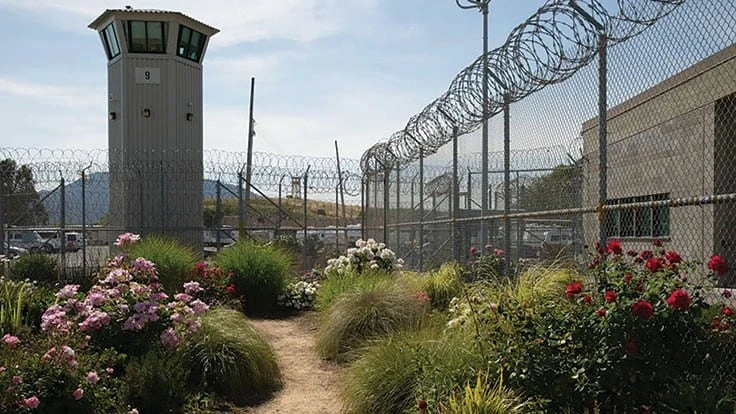
NGB

It is estimated that nearly 1 in 3 Americans — more than 70 million people — have a criminal record. And more than 600,000 men and women are released from jail each year. Because of the stigma associated with a criminal record, nearly 75% of formerly incarcerated individuals are still unemployed a year after release, according to the ACLU. Many people with criminal records are underemployed or in insecure jobs, and talented workers are widely available due to being ignored by the broader workforce.
Prior to the COVID-19 pandemic, 27% of formerly incarcerated people were unemployed, according to research by the Society of Human Resource Management (SHRM). The SHRM Foundation’s report, “Getting Talent Back to Work: A Workplace Survey on Hiring and Working with People with Criminal Records” said some of the barriers to hiring people with criminal backgrounds includes concerns about the legal liability of hiring these individuals and the potential impact on company brand if customers were to learn some employees have criminal records.
But the benefits of second-chance hiring are many, the report states.
When an organization employs workers with criminal records, it “builds inclusive, diverse, and successful workplaces,” according to the report. It also “builds inclusive, diverse, and successful workplaces, creates opportunities for people with criminal records, and demonstrates good corporate citizenship and builds stronger communities.”
The benefits for the individual are life changing. They can get a fresh start supporting and taking care of themselves and their families. Two years after release, employed individuals were twice as likely to have avoided arrest as their unemployed counterparts, according to U.S. Chamber of Commerce research.
“Society as a whole gains when ex-offenders are connected to employment opportunities and their communities in terms of reduced recidivism and development of human capital,” the U.S. Chamber writes in its report, “The Business Case for Criminal Justice Reform: Second Chance Hiring.”The report also revealed a staggering statistic: The U.S. GDP is reduced between $78 billion and $87 billion by excluding formerly incarcerated people.
The Chamber’s report also highlighted a business success story. Since 2009, Nehemiah Manufacturing, a consumer packing firm in Cincinnati, Ohio, has hired 180 employees, 80% of whom have criminal backgrounds. An analysis of the company’s annual turnover rate revealed that the turnover rate is approximately 15%, below the 38.5% average for consumer products companies.

Business recommendations
Despite many employer benefits, significant barriers exist for people with criminal records.
In the SHRM research released in 2021, 26% of managers and 14% of HR professionals said they were “unwilling to hire people with criminal records.”
In 2017, the ACLU’s Trone Center for Justice & Equality published “Back to Business: How Hiring Formerly Incarcerated Job Seekers Benefits Your Company.” In this report, they provide recommendations to businesses who want to develop second-chance programs.
- Ensure hiring managers are not treating criminal history information differently for different applicants, based on their race or national origin. It is illegal to ask only people of a certain race or gender about their criminal records.
- Remove questions about criminal records on application forms and delay the inquiry until the interview, and preferably after a conditional job offer is made.
- Consider only convictions and pending prosecutions that are relevant to the job in question. Do not consider arrests.
- Consider only convictions recent enough to indicate significant risk.
- Consider evidence of rehabilitation.
- Train human resources personnel to conduct individualized assessments that consider relevant factors like the number of years that have elapsed since conviction; evidence of rehabilitation; the connection of the crime to job duties. Provide anti-bias training to all staff with hiring responsibilities.
- Notify the applicant in writing that the company may use the information obtained from a background report for employment decisions.
- Develop partnerships with workforce development agencies and reentry job training programs that can refer qualified and trained persons with criminal records. Most human resources professionals aren’t trained to determine whether an applicant is rehabilitated and job-ready.
- If questions still persist, seek legal guidance before making any final decisions.
The Second Chance Business Coalition works with large employers, providing them with a set of tools, relationships, and expertise to allow them to successfully hire and provide career advancement and greater economic opportunities to people with criminal records.
“Business has an important role to play in making it easier for people with criminal backgrounds to get back on their feet,” says Jamie Dimon, CEO at JPMorgan Chase & Co. “At JPMorgan Chase, last year, we hired 2,100 people with criminal backgrounds. Providing a second chance will give people dignity and allow them to provide for their families, and it helps companies like ours expand the number of people we hire to ensure we get the best talent.”
For employers looking for help on second-chance programs, visit www.get tingtalentbacktowork.org and download the toolkit.

Green-industry applications
The Pennsylvania Horticultural Society trains individuals for careers in horticulture once they are released from the Philadelphia Department of Prisons. The PHS Workforce Development Program offers paid training in horticulture, landscape maintenance, greenhouse operations, carpentry and masonry. The training also includes job readiness, conflict resolution, health education, and occupational therapy. Upon graduating, PHS provides continued case management support and job placement with partnering employers.
Keith Green, director of the PHS LandCare and Workforce Development programs, says they work with individuals on a pre-release and post-release basis. The pre-release program is for people who have qualified for early release. They’ve partnered with Temple University and set up an 18-week training program that lasts 12 weeks behind the prison walls and concludes with a six-week internship with PHS.
“We teach them various skills like how to use tools, teach them about plants, including plant ID training, and we do some hardscape training,” Green says. “We also provide workplace leadership training, which involves how to get and keep a job. This is very important because it helps them learn how to interact with employees and their boss, for example.”
After the 12 weeks of training is complete, the program participants begin a paid internship with PHS where they may work on a parkway landscape job with the City of Philadelphia’s public landscape crew or in a community garden, for instance.
“During those six weeks they’re transitioning from people telling them what to do on a daily basis to them being on their own,” Green explains. “It’s so critical for them to have a job during that time so they can buy clothing, food – the basic necessities of being on their own. It also helps on a self-esteem level because when an individual comes home, there’s a stigma when applying for jobs.”
PHS also operates a post-release program for people who have been out of prison for a range of six months up to five years. It’s a six-week bootcamp style program that offers training as a landscape technician where they receive training on using equipment, basic tree knowledge and some hardscaping basics, Green says. PHS pays the participants during the six-week period. They’re also provided work gear such as pants, boots, gloves and safety glasses.
“They work with us for four weeks then with an employer partner for two weeks,” he explains. “After those two weeks are completed, if the individual and the employer feel like it’s a good fit, they retain the job and go to work for that company.”
Since 2016, PHS has placed more than 200 people in jobs through that model, Green says.
“About 75% of the people enrolled have completed the program and 95% of the people who graduated have received full-time jobs,” he says. “We keep in contact with them and about 50-55% are still employed after 6 months. We’re seeing good results.
“The more a person learns and the more skills they have, the more valuable they are to the landscape industry. There are lots of opportunities in this industry that people don’t realize. We’ve trained a lot of people who came back four or five years later saying, ‘I never imagined doing this and keeping it up.’”

Green says it’s all about developing the individual to be successful.
“We try to eliminate as many barriers as possible. The employee partners we work with are giving these individuals an opportunity, they’re not judging them on their past. They’re giving them a fresh start, and when the individual knows that they’re being judged on how they’re performing, they work harder and tend to be more loyal.”
During the program, participants are graded weekly. If they don’t achieve the standards Green and his staff have set for them, they’ll get removed from the program.
“Our partners trust us to provide them with people who will be a good fit,” he adds.
The program also provides case managers for each participant that supports them for a year. They’re helping individuals secure housing, reconnect with family, build a savings — whatever is important to them based on the goals they set for themselves.
Green and his staff are testing an expansion of the Workforce Development Program this year. Graduates may continue their horticulture education through PHS. Currently they’re working with 10 grads who are getting additional training once a week for 15 weeks. The PHS is paying them for the one day they miss at work.
“We think this will help them get a better position within the company they’re working for or at a new place if they’re ready to move on,” Green says.

Explore the April 2022 Issue
Check out more from this issue and find your next story to read.
Latest from Nursery Management
- John Ruter shares UGA's latest woody and herbaceous ornamental plant breeding projects
- Conor Foy joins EHR's national sales team
- Pantone announces its 2026 Color of the Year
- Syngenta granted federal registration for Trefinti nematicide/fungicide in ornamental market
- Get to know Kayela Aeppli
- HILA 2025 video highlights: John Gaydos of Proven Winners
- Q&A with Justin Bartlett
- Be the best choice





